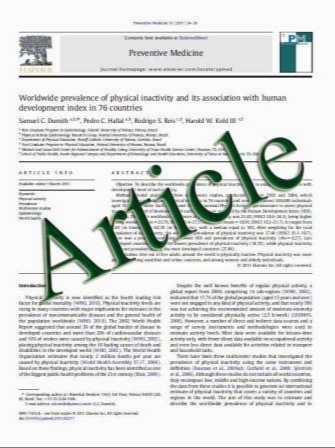The N1 auditory evoked potential component as an endophenotype for schizophrenia: high-density electrical mapping in clinically unaffected first-degree relatives, first-episode, and chronic schizophrenia patients
- نوع فایل : کتاب
- زبان : انگلیسی
- مؤلف : John J. Foxe Sherlyn Yeap Adam C. Snyder Simon P. Kelly Jogin H. Thakore Sophie Molholm
- چاپ و سال / کشور: 2011
Description
The N1 component of the auditory evoked potential (AEP) is a robust and easily recorded metric of auditory sensory-perceptual processing. In patients with schizophrenia, a diminution in the amplitude of this component is a near-ubiquitous finding. A pair of recent studies has also shown this N1 deficit in first-degree relatives of schizophrenia probands, suggesting that the deficit may be linked to the underlying genetic risk of the disease rather than to the disease state itself. However, in both these studies, a significant proportion of the relatives had other psychiatric conditions. As such, although the N1 deficit represents an intriguing candidate endophenotype for schizophrenia, it remains to be shown whether it is present in a group of clinically unaffected first-degree relatives. In addition to testing first-degree relatives, we also sought to replicate the N1 deficit in a group of first-episode patients and in a group of chronic schizophrenia probands. Subject groups consisted of 35 patients with schizophrenia, 30 unaffected first-degree relatives, 13 first-episode patients, and 22 healthy controls. Subjects sat in a dimly lit room and listened to a series of simple 1,000-Hz tones, indicating with a button press whenever they heard a deviant tone (1,500 Hz; 17% probability), while the AEP was recorded from 72 scalp electrodes. Both chronic and first-episode patients showed clear N1 amplitude decrements relative to healthy control subjects. Crucially, unaffected first-degree relatives also showed a clear N1 deficit. This study provides further support for the proposal that the auditory N1 deficit in schizophrenia is linked to the underlying genetic risk of developing this disorder. In light of recent studies, these results point to the N1 deficit as an endophenotypic marker for schizophrenia. The potential future utility of this metric as one element of a multivariate endophenotype is discussed.
Eur Arch Psychiatry Clin Neurosci (2011) 261:331–339 DOI 10.1007/s00406-010-0176-0, Received: 20 December 2009 / Accepted: 23 November 2010 / Published online: 14 December 2010


